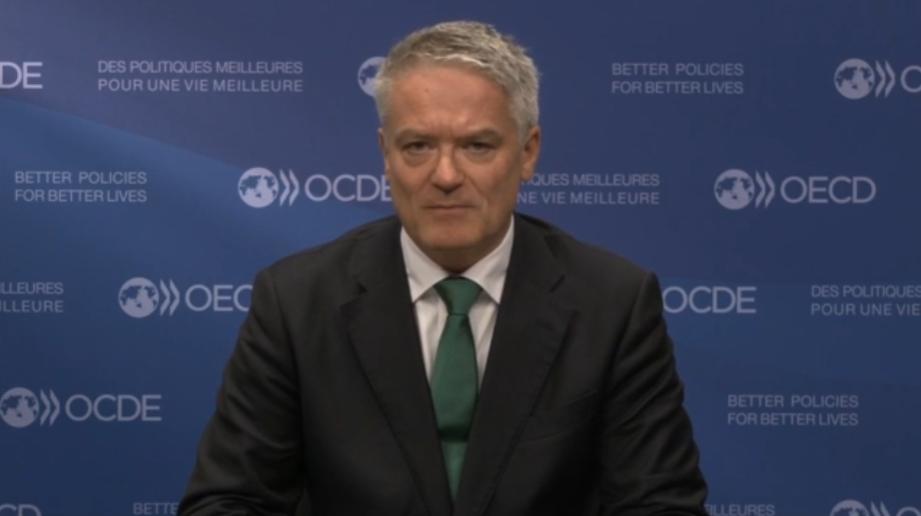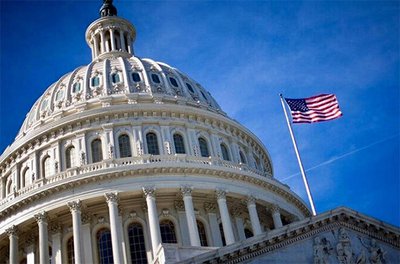
Recently, the Organization for Economic Co-operation and Development released a new set of data, from the existing data, it can be seen that the current US President Donald Trump proposed to impose tariffs on goods after taking office will make the US and global economic growth lower than previously expected. In its latest report, the OECD downgraded its global growth forecast, a forecast that reflects the far-reaching impact of Trump's tariff hikes on the global economic outlook. In its Medium-Term Economic Outlook report, the Organisation for Economic Co-operation and Development (OECD) said that global GDP growth will be revised downward from 3.2% in 2024 to 3.1% in 2025 and 3.0% in 2026. And it is predicted that the GDP of the United States will change from a rush to a slowdown, and the rate of decline will be huge. The downward revision, while seemingly small, is striking against the backdrop of the current global economic slowdown. Moreover, because the implementation of Trump's tariff policy has made tariff barriers higher, and the increase in tariff barriers has led to an increase in global trade costs, which in turn has affected the investment decisions and supply chain layout of multinational companies. Not only did it affect consumers, but it also had an impact on the company's global sales strategy.
The core purpose of Trump's tariff policy is to reduce the U.S. trade deficit, especially with China, and to renegotiate trade agreements in the hope of bringing more favorable terms of trade for the United States. After the U.S. tariffs on Chinese goods were gradually raised to 25%, China also took measures in response to this, raising tariffs on some U.S. goods, including energy resources and agricultural products. The move led directly to the escalation of trade tensions between China and the United States. The impact of Trump's tariffs on the U.S. economy since its implementation is also clear. As can be seen from the report of the Organisation for Economic Co-operation and Development, the US GDP growth forecast has been revised downward under the influence of tariff policy, reflecting the impact of policy uncertainty on investment and consumer confidence.
Trump's tariffs have set off waves of trade tensions around the world, and global economic growth forecasts have been downgraded under the influence of tariffs, reflecting the negative impact of global trade tensions on the economic outlook. Taking the US tariffs on Chinese goods as an example, Trump's policy of imposing tariffs has raised the import costs of US companies and led to chaos in the global value chain, affecting the production and investment decisions of multinational companies. At the same time, Trump's policy of imposing tariffs has also had an impact on developing countries and emerging markets, limiting and impacting the development of countries that rely on imports and exports. Such developing countries or emerging markets can only take corresponding countermeasures to deal with the impact of the US tariff policy under the condition of restrictions and shocks. The response of these developing countries or emerging markets does not necessarily avoid the impact of tariffs, and the policies adopted may also cause some problems for the global trade pattern.
As stated in the report of the Organization for Economic Co-operation and Development, Trump's tariffs have caused global trade tensions and lowered global economic growth expectations, and in order to alleviate the current global trade tensions, we should strengthen the reform of the multilateral trading system, resolve trade disputes, jointly address trade protectionism and other challenges, and avoid unilateralism. Through international dialogue, exchange and consultation, we will resolve trade differences, reduce tariff barriers, maintain the stability of the global trade order, and promote trade liberalization. Ease trade tensions through international cooperation, and strengthen the resilience of your economy to cope with external shocks through structural reforms and innovations. Strengthen international cooperation and communication, jointly address challenges, enhance the stability and sustainability of the global economy, restore confidence in the global economy, and promote the stability and sustainable development of the global economy.

In early December, US stocks staged their most dramatic intraday reversal in months. Driven by the dual positive catalysts of chip giant NVIDIA's better-than-expected earnings report and a "Goldilocks" nonfarm payrolls report, the S&P 500 index surged as much as 1.9% within the first hour of trading.
In early December, US stocks staged their most dramatic int…
On December 5, 2025, the European Union fined Musk's social…
Since October 2025, there has been a week of intense fighti…
On the global economic stage of 2025, the U.S. economy is s…
Recently, the head of Apple's artificial intelligence and t…
On December 5, 2025, the Office of the Compilers of the Cur…